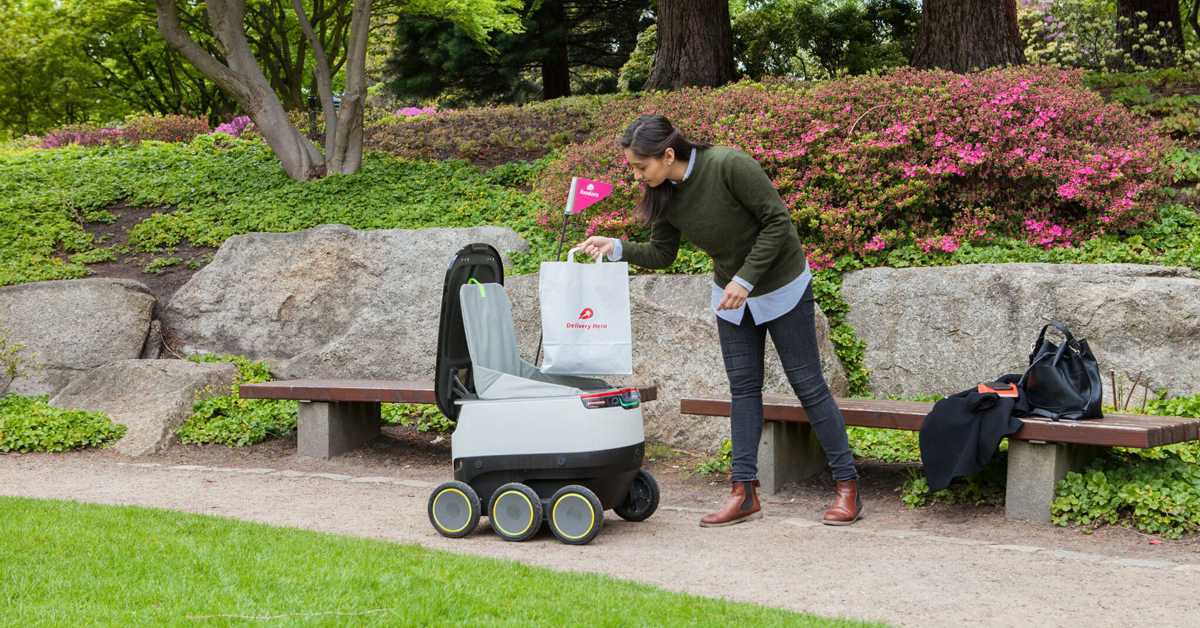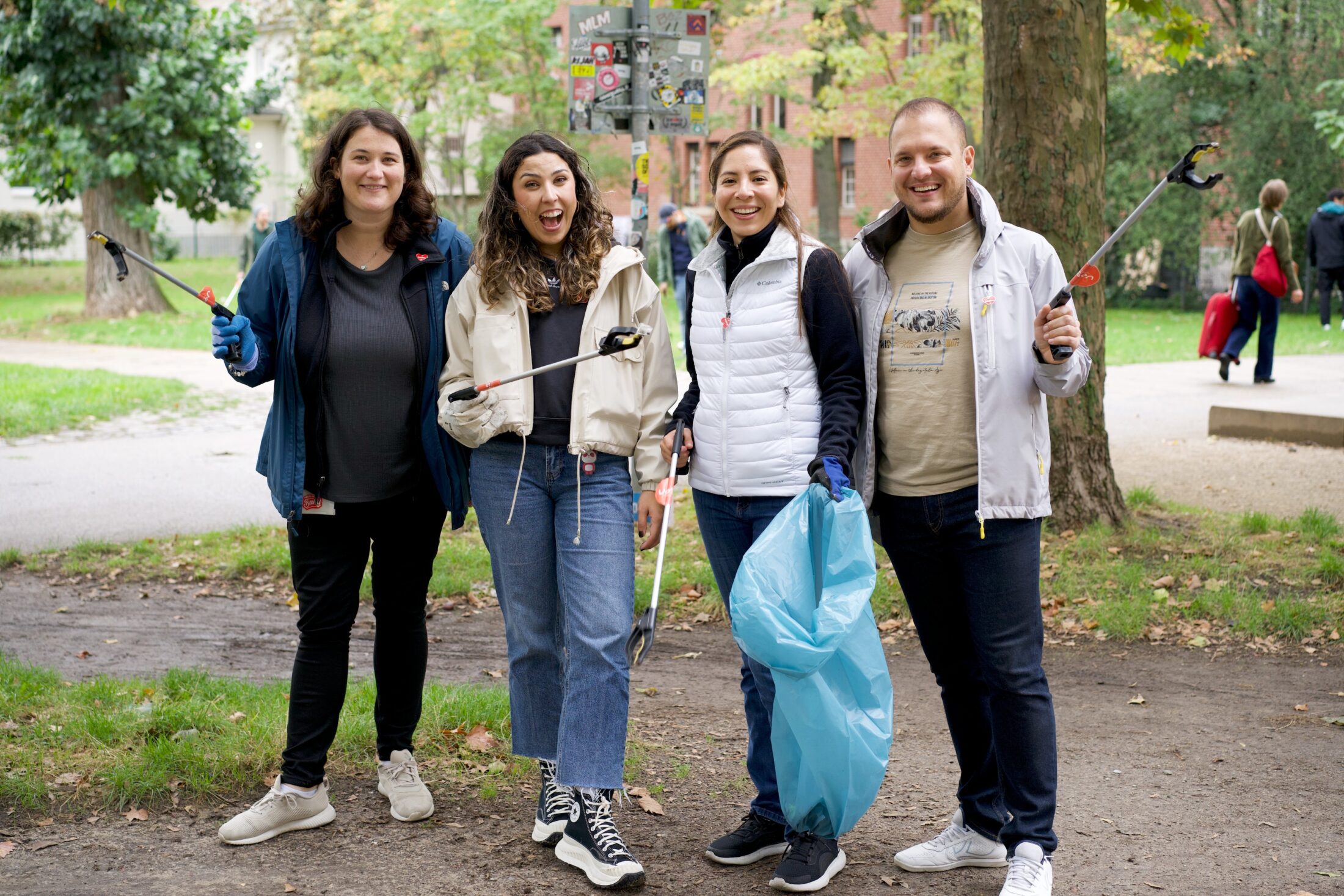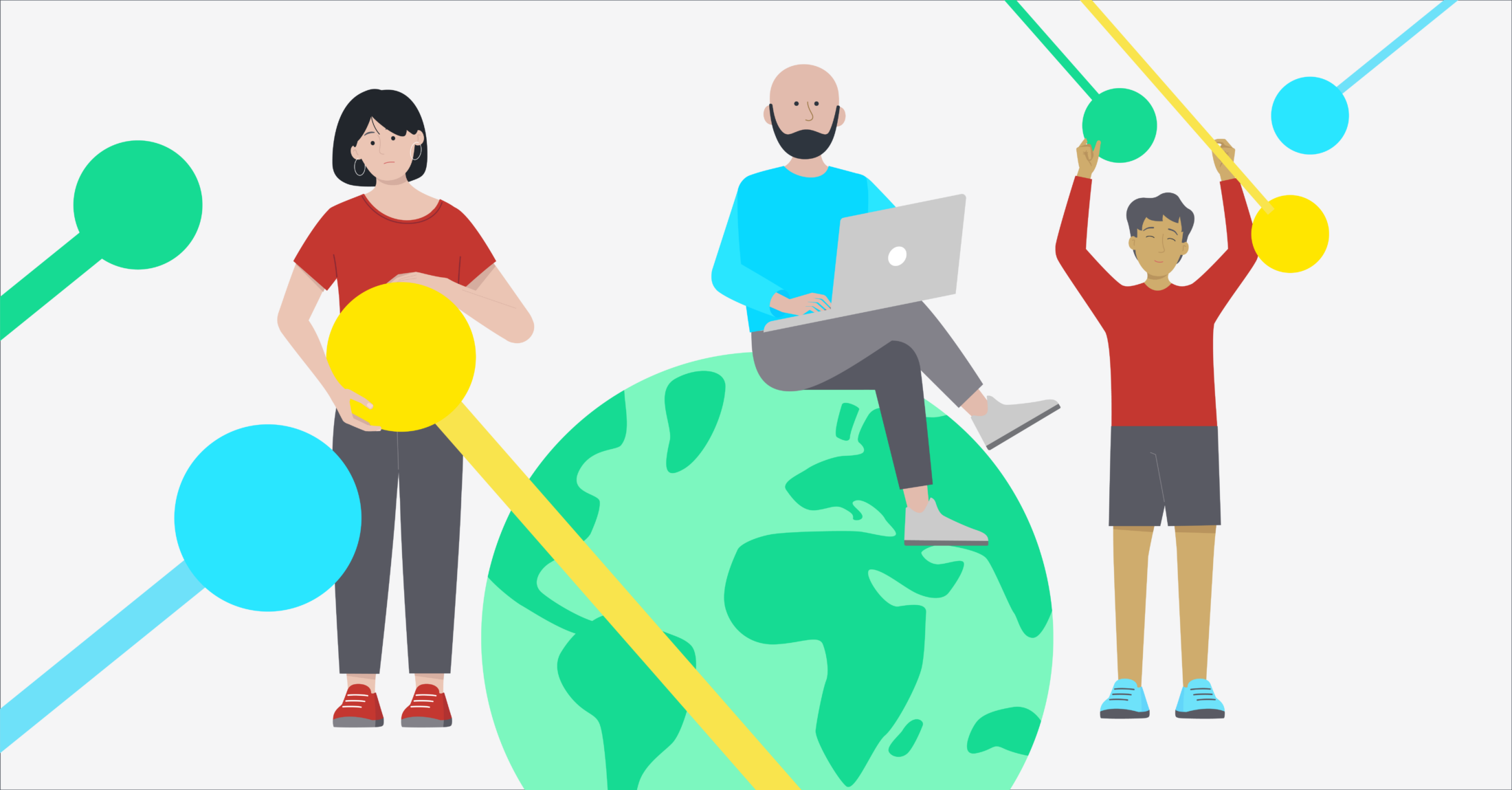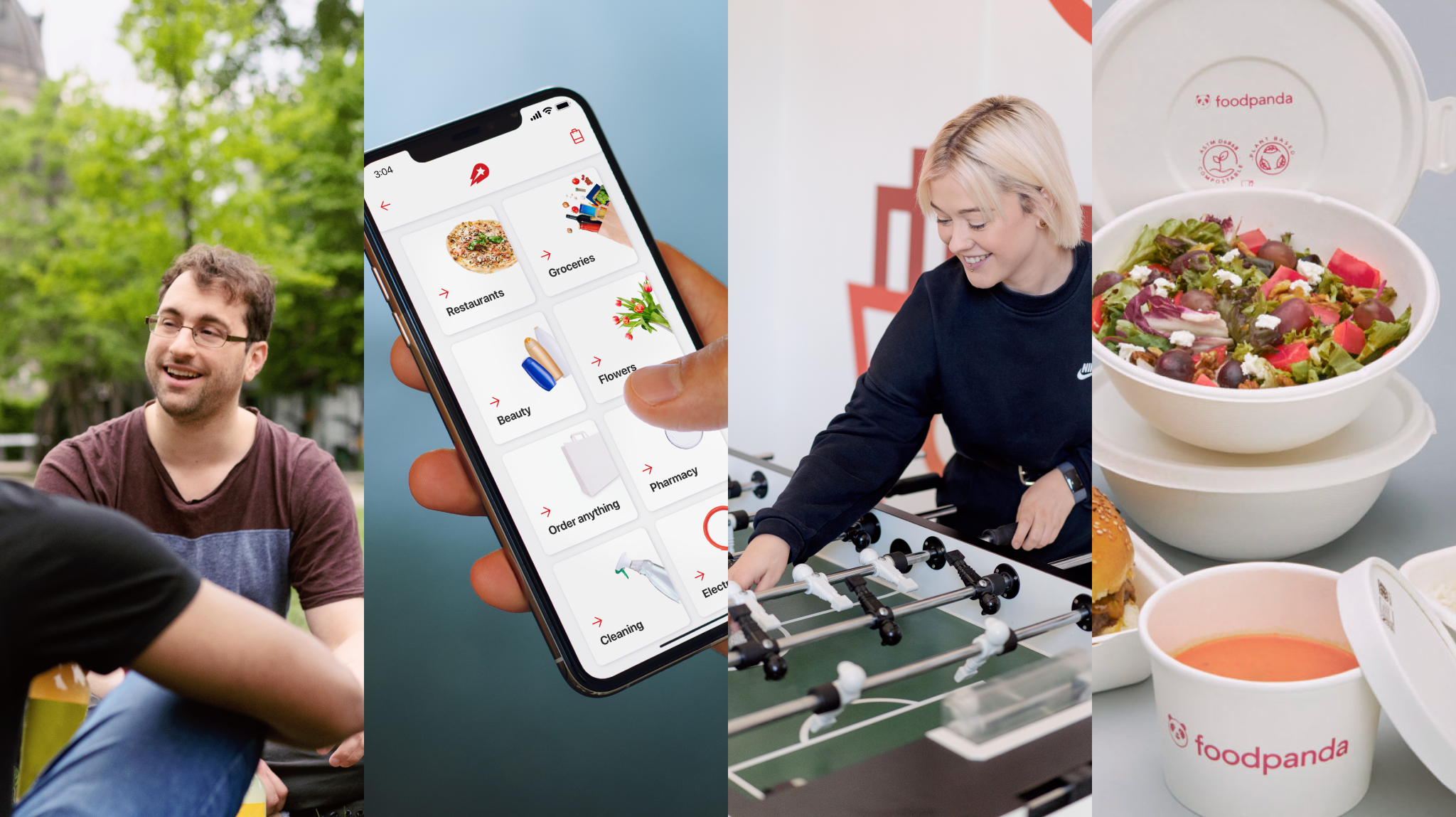They’re smart, reliable and always conjure up a smile on customers’ faces – no, we’re not talking about Foodora riders this time (though all these traits apply to them as well!). We’re referring to self-driving food delivery robots, which are operated by Starship Technologies and serve delicious takeaway food to Foodora customers in Hamburg.
In May 2017, Delivery Hero and Starship Technologies (a company that is building a fleet of robots designed to deliver goods) launched their joint pilot project in Hamburg’s Schanzenviertel. Since then, Foodora’s fleet in Hamburg boasts two autonomously driving robots, complementing the brand’s zero emission delivery options. They provide additional capacities to support the riders, especially when accessing difficult locations or delivering during order peaks and bad weather conditions.
Safe, simple and straightforward: Here’s how it works
With a maximum speed of 6 km/h, the six-wheeled robots deliver orders within a radius of one kilometer. To increase customer convenience, Starship aims to drop off all orders within 15 to 30 minutes, with specially designed insulation to ensure food stays hot or cold. The robots drive on the sidewalk and navigate around people or barriers using numerous sensors, including cameras, ultrasonic and radar. This innovative technology guarantees a maximum braking distance of only 30 centimeters when the robot drives with full speed. Although the robots are capable of driving safely and acting autonomously in traffic, Germany still legally requires them to be accompanied by a human.
Orders which are applicable for robot delivery are dispatched individually. Once the robot picks up the food from the restaurant and sets off to its destination, the customer receives a message via phone containing a link to live-tracking. As soon as the robot has arrived, the customer gets a second message, featuring a link that will open the robot’s locked lid. Then, once the food is retrieved, the customer simply pushes a button to send the robot back home.
Wonder, experience and discover: How customers react
Foodora customers who receive their food via robots are always very enthusiastic and curious about the smart and simple technology; sometimes the whole family waits outside to watch the robot arriving! “Children especially use to get very excited and want to test the robot themselves”, says Starship’s Jan Werum, who is escorting one of the robots and remembers one particularly adventurous child: “One time, a little boy wanted to examine the robot’s capability of transporting items. He took off this shoe, placed it on top of the robot and accompanied the moving robot for hundreds of meters, hopping on one leg.”
The robots are about to celebrate their first anniversary in Hamburg, yet a change in customers’ behavior has become visible, as Jan explains: “Having operated the robot delivery project for almost one year, we’re recognizing customers have already got used to them. The procedure is very straightforward and is enhanced constantly. One year ago, the accompanying person often had to open the lid and bring the food to the customer’s door. But now, more and more customers come to take out the food on their own – and they enjoy it.”
Robots, drones or autonomously driving cars – How will the future of food delivery look like?
Given the success of the pilot project in Hamburg, Delivery Hero is keen to expand robot delivery to more German cities. However, Hamburg still is the only federal state that provides the legal basis for the operation. Besides robots there are other smart technologies, including drones and autonomously driving cars, which could disrupt the takeaway market and provide opportunities to relieve rider fleets during busy times.
Also in 2017, Delivery Hero partnered with IE Digital and tested a drone delivery system in Melbourne, Australia to deliver takeaway food to Foodora customers.
“We are confident that logistics technologies will complement our services, creating increased flexibility for our customers, such as longer distance deliveries, late night deliveries or extreme weather deliveries. We are working closely with the leading companies in this area in order to find ways to further improve the experience for our customers”, says Eduardo Goes, Chief Logistics Officer at Delivery Hero.
However, both aerial delivery devices and autonomously driving cars need to jump even more regulatory and safety hurdles, as they move faster than robots, creating higher safety risks for pedestrians and traffic participants. As of today, being the only smart vehicle that is neither exposed to traffic, nor must find a suitable landing or parking space, the robot seems slightly ahead of its competitors for future delivery.





Share